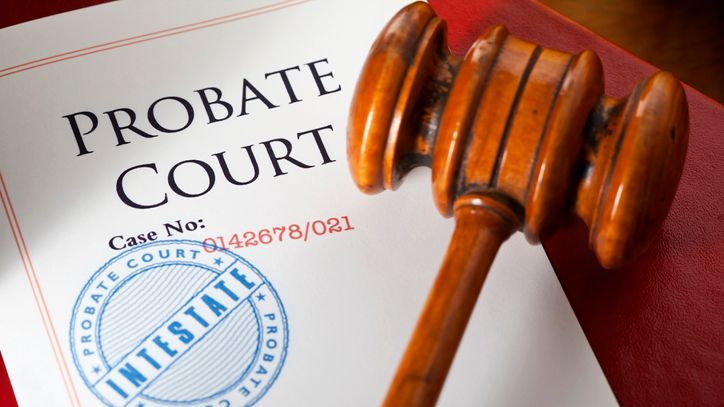Payable on death (POD) and transfer on death (TOD) accounts both offer a unique mechanism for streamlining the transfer of assets when an account holder dies. Assets held in POD and TOD accounts swiftly pass to the named beneficiary, bypassing the often time-consuming and costly probate process. Despite their similar names and purposes, the POD designation only applies to bank accounts, certificates of deposit and savings bonds, while the TOD designation applies to investment accounts and other assets.
A financial advisor with estate planning expertise can be a valuable resource as you plan for the day when you’re no longer around.
What Is a Payable on Death Account?
A payable on death (POD) account is a type of bank account that eases the process of estate planning. In essence, a POD account allows the account holder to designate a beneficiary who will inherit the funds in the account upon the account holder’s death.
Also known as Totten trusts, POD accounts avoid probate, the legal process for validating a person’s will and distributing their assets under court supervision.
For example, if a woman opens a POD account and names her son as the beneficiary, the son would automatically inherit the account balance upon her death without probate.
One of the key characteristics of a POD account is its adaptability. A wide range of account types and holdings can be designated as POD accounts, including:
- Savings accounts
- Checking accounts
- Certificates of deposit (CDs)
- Money market accounts
- Savings bonds
What Is a Transfer on Death Account?

Transfer on death (TOD) accounts can easily be confused with POD accounts, as both facilitate the transfer of assets upon the account holder’s death. However, they hold distinct types of assets. While POD accounts typically hold bank account funds, TOD accounts primarily contain securities and investment accounts.
For instance, assets like stocks, mutual funds and exchange-traded funds (ETFs) might reside in a TOD account, while POD accounts primarily hold savings or checking account funds. Beyond this distinction, POD and TOD accounts are quite similar.
What Other Assets Can Have TOD Designations?
Moving beyond the standard TOD accounts for securities and investment accounts, other types of assets can also carry TOD designations. These encompass real estate and vehicles, known as transfer on death deeds and transfer on death titles for vehicles, respectively. Like TOD accounts, these designations aim to facilitate a direct transfer of these assets to designated beneficiaries upon the owner’s death, bypassing probate.
However, it is important to remember that TOD account rules and regulations vary by state. This variation underlines the importance of seeking legal advice or conducting comprehensive state-specific research before establishing a TOD account or designation. Understanding the specific regulations in your state can help avert potential legal complications and facilitate a smoother transfer of assets.
How to Add POD and TOD Designations
Understanding how to add POD and TOD designations to your accounts helps ensure a smoother transfer of assets after your passing.
The first step in this process is to contact your bank or brokerage firm to inquire about adding POD or TOD designations. These financial institutions usually provide specific forms for this purpose, typically titled “POD designation form” or “TOD designation form.” Filling out these forms usually entails providing the full legal name, address and Social Security number or tax ID number of the beneficiary.
Once these forms are completed, they should be returned to the bank or brokerage firm. In turn, the institution will update your account information with the new POD or TOD designations, thus legally binding the asset transfer upon your death.
The process of designating POD or TOD is not without legal considerations and regulations. Generally, anyone can be named as a beneficiary for a POD or TOD account, including minors, non-U.S. citizens and organizations.
However, the beneficiaries have certain responsibilities, such as providing a certified copy of the deceased’s death certificate to the bank or brokerage firm to facilitate the transfer of assets.
POD vs. TOD Accounts: Key Differences
While POD and TOD accounts serve the same purpose of avoiding probate, they apply to different types of assets. POD accounts are used exclusively for bank-related assets, such as checking accounts, savings accounts, certificates of deposit (CDs) and savings bonds. In contrast, TOD accounts cover investment-related assets, including stocks, mutual funds, ETFs, and brokerage accounts.
Another key distinction is that TOD designations extend beyond financial accounts. In some states, real estate and vehicles can carry a TOD designation, allowing them to pass directly to a beneficiary. POD accounts do not have this flexibility. Despite these differences, both options provide a straightforward, cost-effective method for estate planning by ensuring assets transfer directly to beneficiaries without the delays of probate.
Pros and Cons of POD and TOD Accounts

Designating beneficiaries of POD and TOD accounts is a simple and effective estate planning strategy that can make things a little easier for your heirs when you pass away. However, there are some drawbacks and shortfalls of these accounts. Here’s a look at the pros and cons of POD and TOD accounts.
Pros
- Probate avoidance: By sidestepping probate, POD and TOD accounts streamline the distribution of assets post-death, allowing beneficiaries to gain access to these funds with greater speed.
- Simplicity: Setting up these accounts is generally straightforward, often requiring just the completion of a form at the bank or brokerage firm.
- No additional cost: There’s usually no cost to establish these accounts, aligning with the needs of individuals seeking a cost-effective method of transferring assets.
Cons
- Joint ownership complexity. When an account is jointly owned, the beneficiary of the account won’t receive the assets until the surviving owner(s) die. The same applies to accounts owned in states with tenancy by the entirety for married couples.
- Naming alternative beneficiaries: These accounts do not allow for the nomination of alternative beneficiaries if the primary beneficiary or beneficiaries predecease the account owner. This could lead to the assets being subjected to probate if the primary beneficiary is no longer alive at the time of the account holder’s death.
- Transfers only happen after death: These accounts stipulate that the person must pass away before the beneficiary can access the funds – a restriction that could prove troublesome if the beneficiary requires access to these assets during the account holder’s life or if the account owner becomes incapacitated during their lifetime.
Bottom Line
Payable on death (POD) and transfer on death (TOD) accounts are effective estate planning tools designed to simplify the transfer of assets upon the account holder’s death by bypassing the probate process. POD and TOD provide flexibility and control, allowing for savings and investment accounts to be transferred seamlessly to a named beneficiary.
Estate Planning Tips
- If you’re focused on avoiding probate, there are several estate planning strategies that you can employ to keep your assets out of this court-supervised process. Transferring assets to a living trust while you’re alive is one way to bypass probate, but it’s not the only approach that may work for you.
- It’s important to enlist the help of professionals when you need it. A financial advisor with estate planning expertise may be able to guide you through this process. Finding a financial advisor doesn’t have to be hard. SmartAsset’s free tool matches you with vetted financial advisors who serve your area, and you can have a free introductory call with your advisor matches to decide which one you feel is right for you. If you’re ready to find an advisor who can help you achieve your financial goals, get started now.
Photo credit: ©iStock.com/shapecharge, ©iStock.com/kate_sept2004, ©iStock.com/stocknshares
